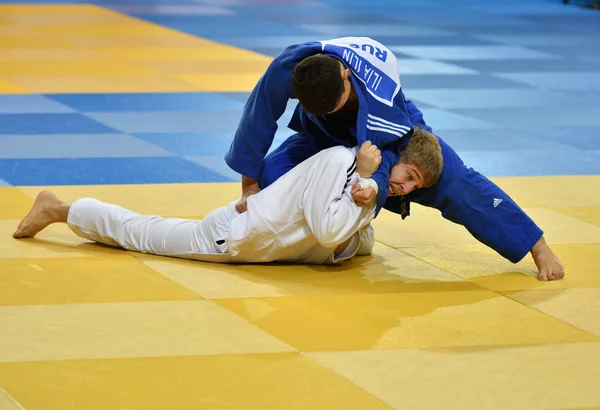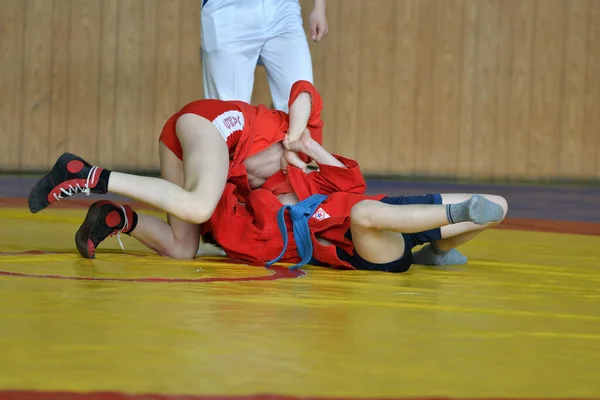
Headscissors are a common stronghold in combat sports practices, especially in wrestling, grappling, and MMA. This type of submission will hold an opponent’s head, neck, or any part of the body in such a way as to tilt the person or put them into an uncomfortable position whereby the person in question has to concede.
Being able to utilize a head-scissor move can be the make or break point, especially for the outcome of the fight for both beginners and advanced fighters. It is thanks to this that there is no alternative, if you want to be a head-scissor expert:
what it is, how to do it correctly even with its comprehensions, modification of the hold, mistakes made, countermeasures, and so on.
What is a Headscissor Submission Hold?
The opponents are usually seated on the mat facing each other. The wrestler attempted to perform a head scissor hold on the off-balanced opponent who had their torso leaning forward.
The head scissor is a restraint, as it serves to trap the opponent’s head between the legs of the fighter while applying erratic pressure to the head.
How Does the Headscissor Work?
The head scissor hold works by squeezing the opponent’s head with both the attacker’s legs. This may also make breathing difficult, apply strain to the muscles of the neck, or even keep the antagonist in a position that makes it impossible for them to move.
Types of Headscissor Variations
There are multiple variations of the head-scissor technique, each suited for different combat sports and situations. Here, we’ll explore the standing and grounded head scissors, as well as variations seen in disciplines like Brazilian Jiu-Jitsu.
1. Standing Headscissor
In this variant, the student remains upright and encircles the opponent’s head with their legs, frequently employing the opponent’s movement or mass to bring them down.
2. Grounded Headscissor
The head-scissor technique has various forms, each ideal for a particular combat sport and circumstance. In this case, we are going to cover the standing as well as grounded variations of head-scissor, together with some of their variations in Brazilian Jiu-Jitsu.
3. Inverted Headscissor
In other extreme cases, users can perform the head-scissor in an inverted position by bending upside down and trapping the opponent’s neck. Grapplers mostly use this advanced variant to catch opponents off guard
How to Perform the Perfect Headscissor Hold: Step-by-Step Guide
Proper application of the head-scissor requires skilled movement, proper placement of the legs, and dean timing. Therefore, let us go through the steps on how to do a head-scissor submission hold as perfectly as possible.
1. Establishing Control
Before attempting the head-scissor, it is paramount that one assumes control over the opponent’s positioning.
2. Positioning the Legs
The primary thing to keep in mind while applying the head scissor hold is the placement of the legs. For instance, the user should press their thighs as close to the opponent’s neck or head as possible.
3. Squeezing with Precision
Before executing the head scissor hold, it is necessary to position oneself correctly relative to one’s opponent. In this case, the user aims to break the opponent’s posture and twist their neck uncomfortably, allowing them to deploy the standard cope effectively.
4. Maintaining Balance
Balance is also important when applying the head scissors, especially if one is attempting to do it in a standing position. When they are down, use your arms to balance yourself and control the opponent’s body.
Common Mistakes to Avoid When Applying the Headscissor Hold
While the head-scissor is relatively easy to learn and execute, many practitioners commit typical errors that may cause the weakening of its resultant effects. Thus, below is the catalog of common mistakes and how to correct them:
1. Incorrect Leg Positioning
If the legs aren’t working to squeeze the opponent’s neck or head, then the pressure exerted will be feeble and hence the opponent will escape easily.
2. Using Too Much Strength
Most beginners think that it is only leg strength that is useful in a head-scissor submission hold. Of course, all else being everted, strength will carry one a long way but too much emphasis on that will wear you out in no time. The secret is to combine strength with technique.
3. Staying Static
In dynamic combat, remaining in one stance for a protracted period may prove detrimental. A head scissor hold is a controlling maneuver, but one must always be prepared to move to another submission technique in case of a real fight if an opponent is fighting or trying to get out of the hold. There is movement in submission grappling, and that involves changing from one technique to another to win.
Defending Against a Headscissor Hold

Inexperienced wrestlers who wear head scissors shown in the figure, the catch is heavy, and squished, but with proper entrance defense, the throw can be beaten or turned into other techniques. For instance, here’s how to properly defend:
1. Posture Up Immediately
Immediately after your opponent attempts a head-scissor on you, attempt to take a posture that will keep them from locking their legs around your head.
2. Create Space
Employ your arms to shove against your adversary’s thighs with the intent of distancing their legs from your neck. When there is some distance created, it is easier to break free from the grip.
3. Use Explosive Movements
To escape the head scissor hold, you will have to do it quickly, explosively, and decisively. Create some distance fast to get your head free of the grip and do not linger in the compromised position for long.
When to Use a Headscissor in Combat Sports
The head scissor is a potent submission hold in many fighting techniques. But application of this hold comes with a skill; knowing when to use. This particular submission move is best used in the following cases.
1. Ground Fighting
Headscissor in MMA and grappling is applied to a grounded opponent in almost all positions i.e. guard, and head and arm control. Practitioners head-scissor their opponents to control the head before going for other submissions or strikes.
2. Transitioning into Submissions
The head-scissor technique has other benefits such as helping the practitioner to attack in a sequence of extant maneuvers. For instance, after securing a head scissor, one can easily attack an opponent with a triangle choke or an armbar, thus enhancing one’s grappling arsenal.
Headscissor submission is a very useful maneuver to know because it makes tie fighting more combat effective.
Conclusion
The head-scissor submission is a strong weapon in sports and combat. In grappling and mixed martial arts wrestling, athletes must perform and understand the head-scissor technique optimally, even in its most basic form.
FAQs
How effective is the head scissor submission in modern MMA?
The head-scissor submission is one of the few submission techniques that can work in MMA if appropriately applied especially in ground fighting.
Can beginners use the head-scissor move effectively?
Novices can use the head-scissor hold, but they should focus on technique rather than just relying on leg strength.Positioning and leverage are very important if this move is to be effective.
What’s the difference between a head scissor and a triangle choke?
Well, it is possible to permit head scissors for absolute beginners, however, they ought to be more concerned with the technique than applying only the power of their legs.
How can I escape from a head scissor hold?
Both submissions use the legs but serve opposite purposes: the triangle choke asphyxiates the opponent by cutting off arterial blood flow to the brain, while the head-scissor submission traps and squeezes only the opponent’s head and neck.
Are head scissors legal in all forms of wrestling?
Wrestlers cannot use headscissor attacks in all styles because they may cause injuries.For that reason, it is important to understand the laws of the sport in question.
Read Also:Pro Wrestlers on LiveJournal: The Forgotten Era of Online Connection



